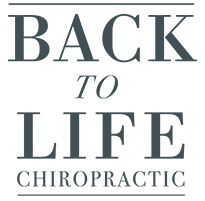- Be careful: Fairly basic I know, but a large percentage of mechanical lower back injuries result from lifting something obviously heavy “because there was no one to help me”, or spending all day gardening when the last time you were in the garden was last summer!
- Stretch: Before applying any strain to one’s back, the muscles should be prepared and warmed up. Stretching should last 10-15 minutes, not just a quick 30 second stretch.
- Avoid overuse: Ever heard of the straw that broke the camel’s back? Often we get extreme back or neck strain from a simple act, like sneezing, stretching in bed or tying your shoelaces. This is more likely not the true cause. It’s the accumulation of the unusually stressful week at work, followed by a hard run, then an extended period of surfing/fishing/painting/gardening/frisbee/any hobby, and finally falling asleep in front of the TV in an awkward position. The final act of, say sneezing/bending (the straw, if you will), is the thing that will exert just that bit too much strain on the joints causing pain.
- Avoid repetitive strain injury: Sitting at a computer or sewing machine for hours, or driving for hours are activities that can predispose one to repetitive strain on the vertebral joints, and will certainly make one more vulnerable to an acute aggravation of mechanical back strain.
- Calcium and magnesium: Proper muscle contraction and relaxation rely on adequate levels of calcium and magnesium. Insufficient levels can lead to chronic muscle tension, spasm or even cramp. Again this makes one vulnerable to acute mechanical back strain.
- Exercise: The spinal joints rely on the muscles to support them, therefore regular back strengthening exercises provide great support for the vertebral joints. Be careful though, as some exercises may well aggravate or cause additional spinal damage.
- Regular maintenance therapy: Mechanical back pain problems are unfortunately not curable as they are related to lifestyle situations (stress, posture, lifting, carrying, driving etc.) which are all things that are part of living. Having chiropractic adjustments every 4 to 8 weeks maintains proper spinal mobility and prevents tightening and “locking” of the joints between the vertebrae. Like servicing a car, servicing your spine helps to prevent wear and tear.
- Reduce excess acidity: The modern lifestyle promotes excess acidity levels, which tend to worsen muscle stiffness and tension. High intake of coffee, alcohol, sugar and refined food, as well as a stressful lifestyle all lead to high acidity levels. Going on a strict alkalinising programme often makes a huge difference towards reducing and even eliminating back and neck problem
- Your mattress: A mattress is too hard or soft can predispose you to mechanical back problems. If it’s too soft it doesn’t offer sufficient support and if it’s too hard it doesn’t allow for the spinal contours, resulting in stiffness and achy joints.
- Relax: Many of the health problems encountered today are due to the “treadmill” lifestyle that we live and from not taking enough quality rest time. In this fast-paced mode the muscle and skeletal system never ‘shuts down’ and the end result is excess muscle tension, tightness, spasm and wear and tear. Consider finding a lifestyle coach to assist with lifestyle management and to relieve stress.

Back to Life Chiro – Chiropractic pain relief that matters, all within medical aid rates.
Back to Life Chiro – Chiropractic pain relief that matters, all within medical aid rates.

